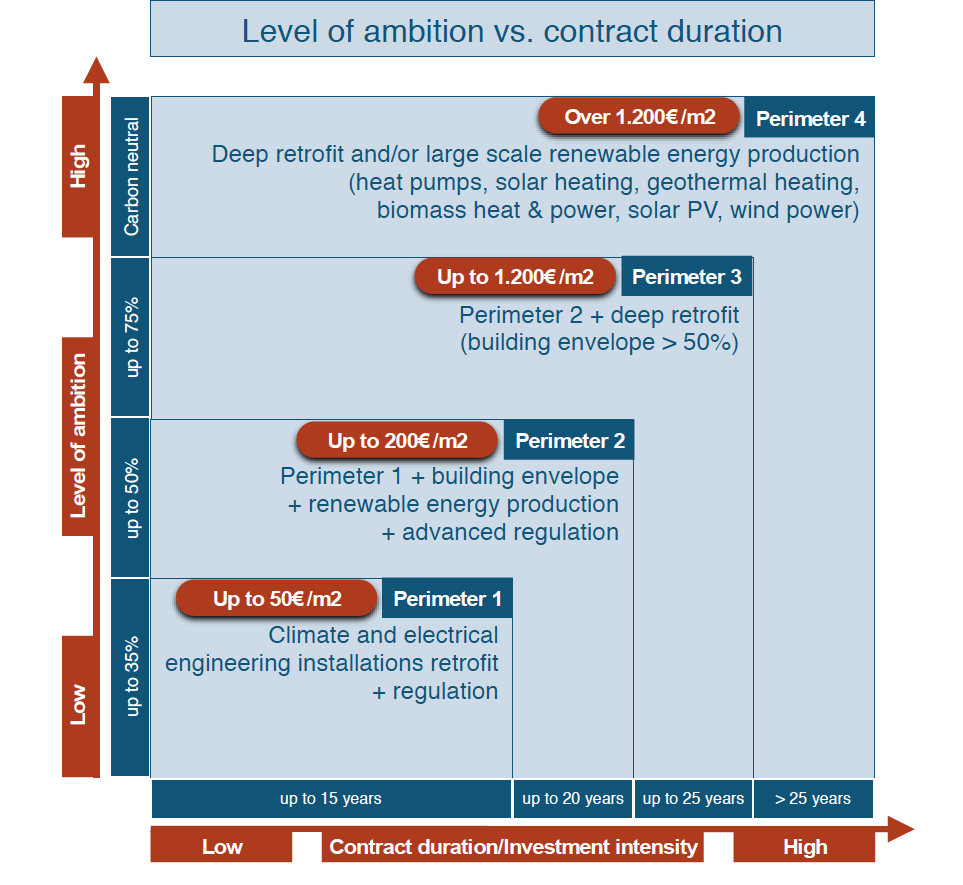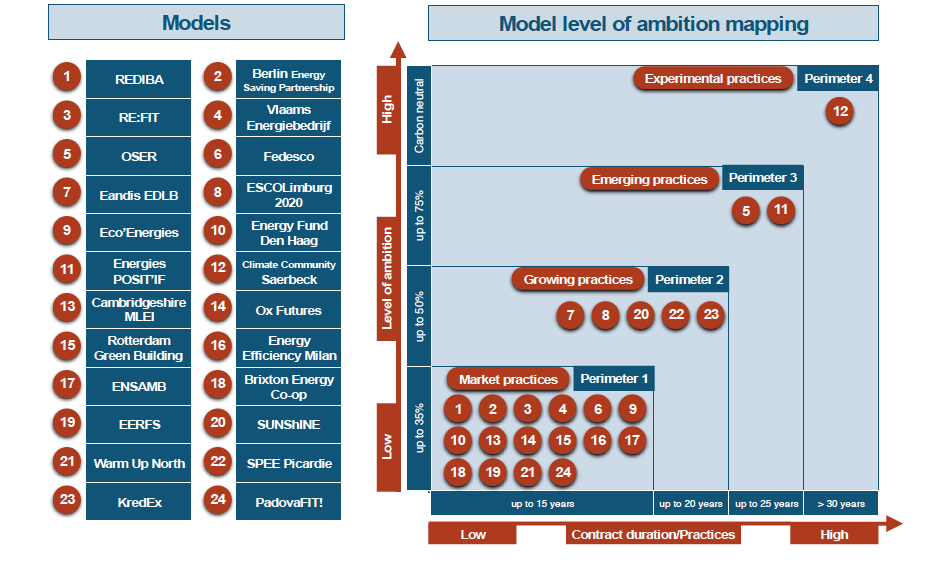The level of ambition can be classified as follows:
Up to 35% reduction of energy consumption and/or GHG emissions
This level of ambition could be reached with short and middle term contract durations (average 10 years) based on technical installation (HVAC, lighting, electrical…) retrofits and managed energy services. As basic indicator, the price per square meter in case of a building retrofit could be less than 50€. Typically the ESCO market based offer targets this level of ambition. The market is also able to offer ESCO and TPF financing options for this level of ambition.
Up to 50% reduction of energy consumption and/or GHG emissions
This level of ambition could be reached with middle and long term contract durations (between 15 and 25 years) based on technical installations (HVAC, lighting, electrical…) retrofits, envelope retrofits (insulation), [near building] renewable energy generation and managed energy services. As basic indicator, the price per square meter in case of a building retrofit could be less than 200 €. There are various examples in Europe of EPC/ESC models that have addressed such a level of ambition. ESCO financing and/or TPF financing will be more challenging for this level of ambition.
Up to 75% reduction of energy consumption and/or GHG emissions
This level of ambition can only be reached with long or very long term contract durations (min. 25 years) based on deep retrofits. As basic indicator, the price per square meter in case of a building retrofit could range from 800 € to over 1500€. There are a few examples in Europe of EPC/ESC model that have addressed such a level of ambition. This level of ambition requires a mix of financing solutions (conventional financing, ESCO financing, PDU financing, Investment fund).
Carbon neutral
This level of ambition can only be reached with combined deep retrofit and renewable energy generation projects. There are very few examples in Europe of projects or models that have addressed carbon neutrality. This level of ambition will require a mix of financing solutions (conventional financing, ESCO financing, PDU financing, Investment fund).

A great majority of the models target the first perimeter, as shown in the figure. This level of ambition could be qualified as the “standard market practice” that relies mainly on the facilitation operational model, the EPC/ESC implementation methodology (see below) and a conventional or Third Party Financing. However, we see that the factor 2 (50% savings) and factor 4 (75% savings) levels gain in attention, as 7 models are targeting those levels of ambition out of the 24 models analysed in the study. These models could be qualified as growing and emerging practices. They rely mainly on the Integration operational model and the Separate Contractor Based (SCB) implementation methodology. Furthermore, a majority of these models integrate the financing either through the Program Delivery Unit (PDU) or a dedicated investment fund. Carbon Neutrality is aimed at by one model only (Case Study Saerbeck), which is really different from the other ones as it combines all the approaches used in the studied models to achieve its objectives. The study has not identified another European initiative having a proven record in this field, meaning that this level of ambition remains the exception and could be qualified as experimental practice.



 Print HTML
Print HTML